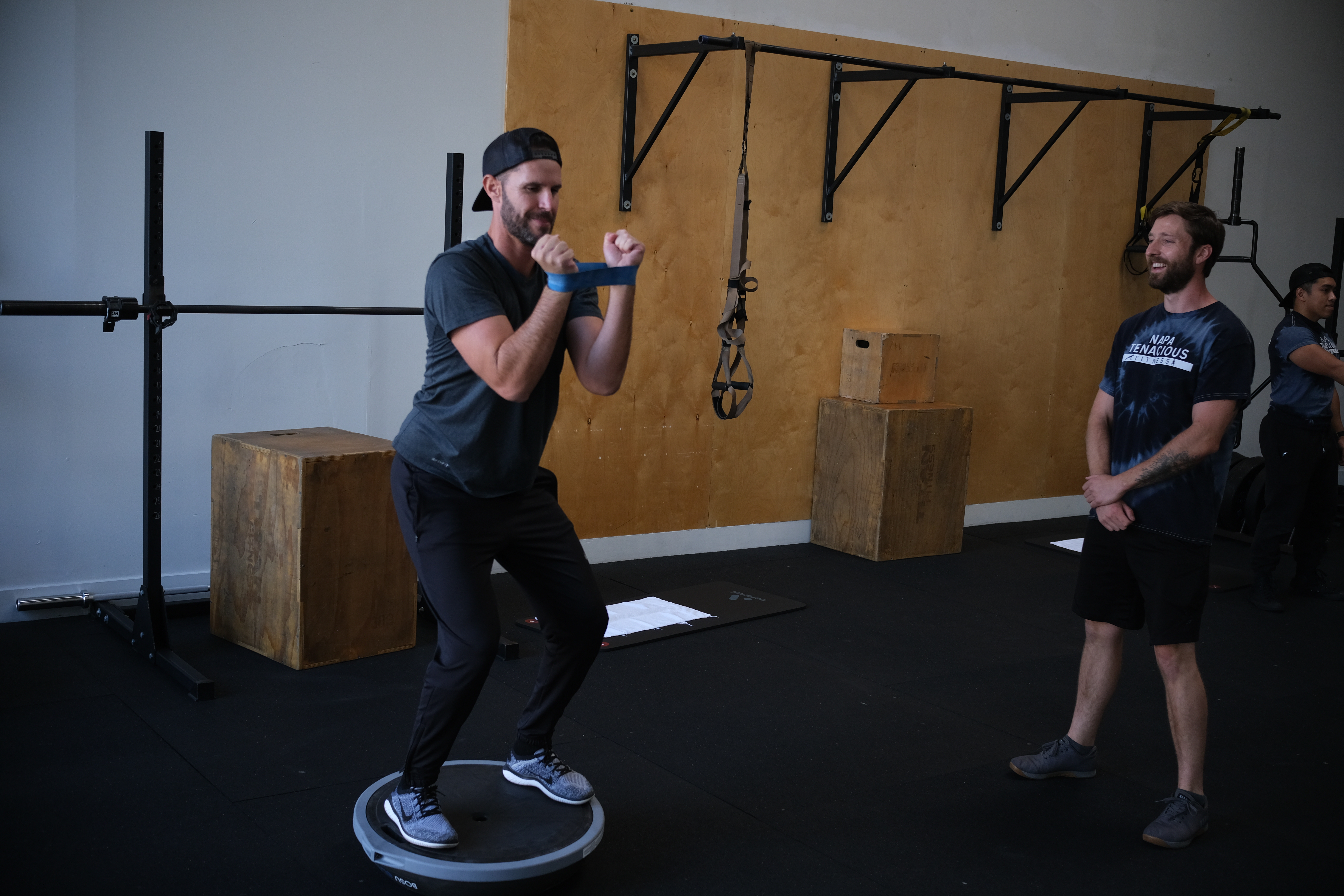Commonly defined as the even distribution of different elements in correct proportions, balance appears in various presentations throughout our everyday functions. Whether it be juggling timelines of making deadlines as work, struggling to figure out where we’re going to be at what part of the day to attend meetings, or ensuring the digital numbers in our bank accounts line up with budgetary logistics, we regularly interact with the concept of balance. As humans who walk and move through dynamic environments, physical balance is similarly important as balancing out our personal lives. Optimal posture, dexterity, and efficient change of direction are just a few themes in which optimal balance is necessary to promote a productive day of movement.
Upright posture and alignment of our body contribute to the structural integrity of our torso, core, and lower extremities. Inadequate conditioning of neck and upper shoulder muscles can cause the head to lean forward past the chest. If the body has too much of an anterior lean when walking forward, the ability to pick up our feet decreases, the likelihood of dragging our feet increases, and the development of less efficient forward walking and running strides can be produced. Therefore, the development of spinal alignment and core strength assist in the component of balance while walking, jogging, or running forward.
Regaining balance after the environment we walk, jog, or play sports is disrupted past a comfortable situation is critical for our well-being and safety through forward locomotion. Some examples of a disruptive environment that might induce a presentation of imbalance can be as simple as stubbing one’s toes over a crack in the ground produced by a root bulging up from the earth creating an uneven sidewalk. Another example might be an object close to shin level that can accidentally be struck, such as the side of a bed frame in the middle of the night during a late-night trip to the bathroom. Random occurrences of striking one’s foot into an object appear at times over which we may not have control over. However, optimal mastery of balance improves our ability to automatically adjust to obstacles that irregularly appear in our usual walking circumstances. The ability to detect and correct a potentially threatening movement caused by an unexpected obstruction in our path throughout walking, running, or stepping up mitigates tripping, rolling an ankle, or falling.
The ability to avoid objects or events that could cause an injury can be avoided by our ability to change direction efficiently. Examples of being required to change direction immediately include avoiding things coming in our direction that could collide with us and impose physical harm such as small animals, rolling balls, young children, and worse yet, automobiles when walking out in public. Visits to a friend’s house in which a rambunctious young German shepherd lives who hasn’t yet mastered the ability to be polite to newcomers might feel the need to jump toward and greet the person coming through the door. If that individual isn’t prepared, then the dog, who has the best intentions to greet you in its way of expressing happiness and joy, can knock that person to the ground and seriously injure that person. However, mastering the ability to detect objects that are traveling in a straight line toward an individual, immediately assessing the severity of the situation, and dodging the exuberant canine can reduce the likelihood of a serious injury. The ability to detect potential risks of people, animals, or other objects is an essential component of balance that supports our productivity by avoiding situations that might cause injury.
A productive method to improve balance that has proven successful with our personal training clients is to test their balance and discover where their imbalances are. Once we discover a point of imbalance, we have a useful area to begin improving upon. A beneficial and relatively safe initial exercise to improve balance is the isometric single-leg balance:
Isometric Single Leg Balance: To perform the isometric single-leg balance, stand with both feet on the ground and toes facing forward. While distributing your center of gravity toward one foot, gradually lift the opposite foot off the ground and hold it in an elevated position. Hold this position for 10-30 seconds on both legs. To modify this movement to be less aggressive, find a wall or object to hold onto, like a countertop or arm of a couch, and use that object to hold onto for support.
Along with improvements in strength and injury prevention, the theme of balance is a critically important category of exercise to focus on. Ensuring to include a few balance-focused exercise activities in our exercise routine has the potential to help us live injury-free and productive lives.
Sean McCawley, the founder and owner of Napa Tenacious Fitness in Napa, CA, welcomes questions and comments. Reach him at 707-287-2727, napatenacious@gmail.com, or visit the website napatenaciousfitness.com.

